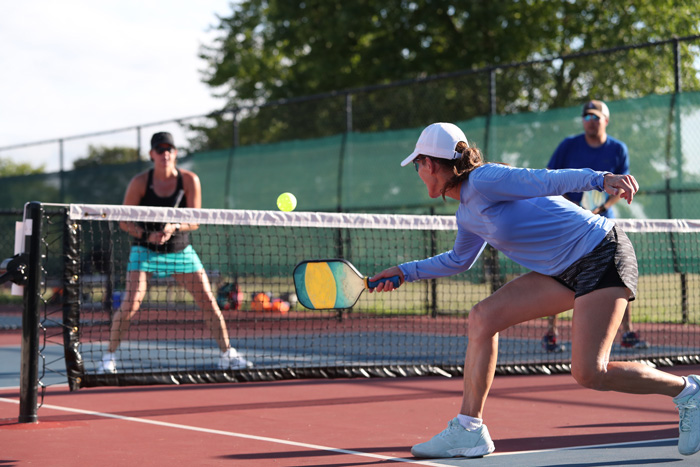By Peter Titlebaum, Ed.D.
How can an oddly named game invented in the summer of 1965 (pickleball was founded by Joel Pritchard, Bill Bell and Barney McCallum from Bainbridge Island, Wash.) become the fastest growing sport in 2023?
This is a great question, as this fact is a reality. The suddenly meteoric pickleball trend really comes down to great timing and baby boomers getting older.
However, it is pretty crazy if you think about it. A 2022 report from the Sports & Fitness Industry Association called it the fastest growing sport in America, with 4.8 million players nationwide. This is nearly a 40% increase from 2020. There are now an estimated 35,000 courts in the U.S.—more than double the number from five years ago.
Today the likes of Tom Dundun, owner of the Carolina Hurricanes of the NHL, former quarterback Tom Brady, former world No.1 tennis player Kim Clijsters and basketball player LeBron James are all lending their names and money to build the sport up. That can’t hurt.
CBS, Fox Sports and the Tennis Channel have all broadcast pickleball matches. If you searched online, you would find books, websites and podcasts on the sport and further confirmation of its extreme growth. If things stay on this trajectory, pickleball could one day be an Olympic sport.
The sport of pickleball is a little like tennis, badminton and ping pong, all rolled into one. It is easy to learn, but takes some time to master. The court is smaller than tennis, but the sport is far easier on your joints.
Pickleball is mostly played as doubles to maximize court usage. As a result, you will continually meet new people in a relatively small amount of space. Games are fast, averaging 10 minutes. It’s almost like speed dating since you change partners from game to game.
Named for one of the co-inventor’s cocker spaniel Pickles, pickleball is a fun workout with a highly social element. Plus, all ages can play against one another.
So why has this sport enjoyed such a positive resurgence? My first experience playing pickleball was in a high school physical education class in the late ’70s. While it was fun, I can’t say I ever played again. What happened to change my mind? Today, I play twice a week. While it is not the only workout, I do enjoy the camaraderie.
Consider the effect of the baby boomers (born between 1946 and 1964). They’re the ones who have pushed to make this game more
popular.
Let me explain. Boomers were part of the racquetball growth trend and played tennis. But as this group got older, their joints started hurting. They missed the social aspect of sport but their bodies were not cooperating anymore.
Pickleball brings people together. It is fun, and it is not life and death. Even if you get a bad partner, it is just one 10-minute game. It will be over soon enough, and you can play another one. The growth has been phenomenal, and it has staying power. What are you waiting for? Give it a try! I am betting you will keep coming back. RM
ABOUT THE AUTHOR
Peter Titlebaum, Ed.D, is a professor at the University of Dayton. His areas of expertise include marketing, sales, fundraising, activation, return on investment and return of objective strategies. He’s a frequent speaker with more than 200 presentations and 150-plus publications to his credit.



